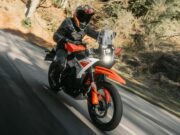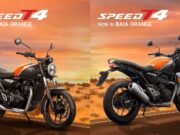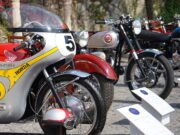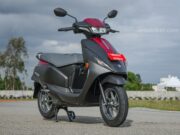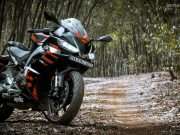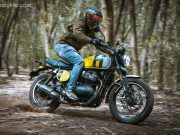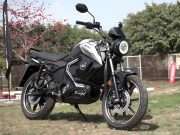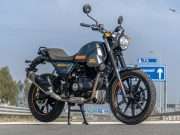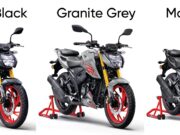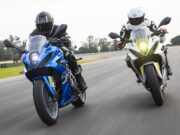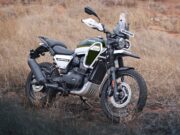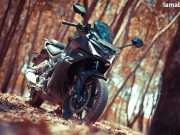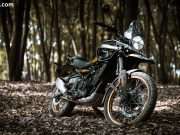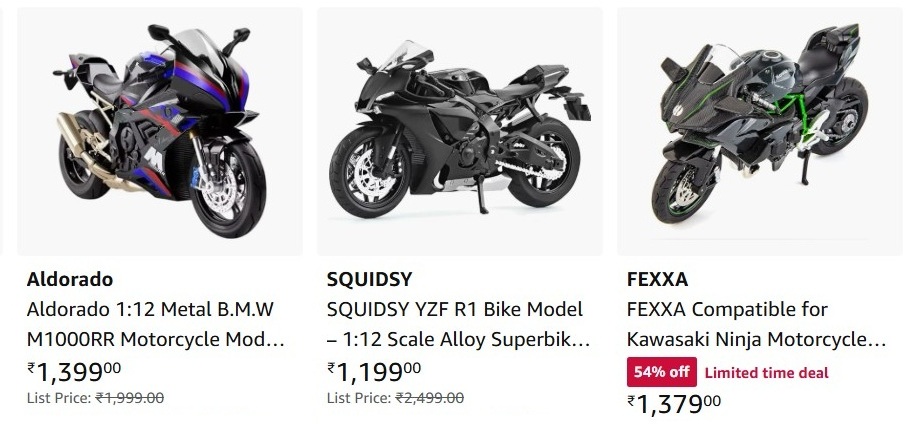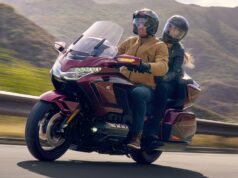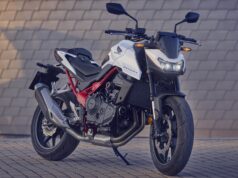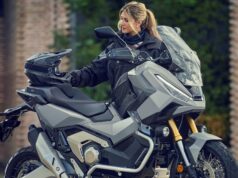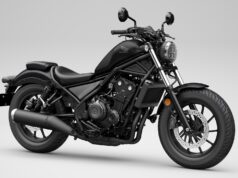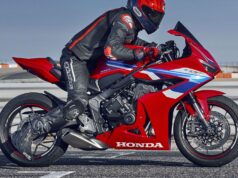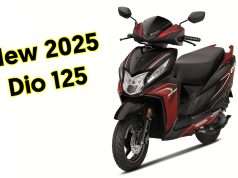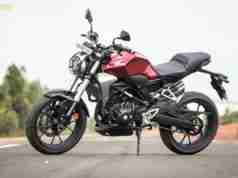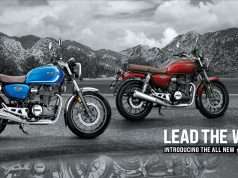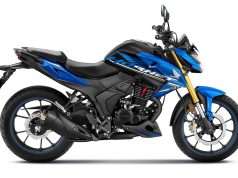Apart from the obvious visual change, the biggest change on the 2018 Honda CB300R is the weight of just 143 kg wet. A brand new frame mixes pressed and tubular steel for a tuned rigidity balance that gives great feedback. The CB300R also features 41 mm USD forks with radial-mount 4-piston caliper, hubless floating front disc, IMU-based ABS and Dunlop radial tyres.
The CB300R’s compact 286 cc DOHC 4-valve liquid-cooled single cylinder engine – shared with the CBR300R – is a diminutive jewel that has won many fans for its free-revving and responsive nature. It’s also an engine that works well in ‘real-world’ road riding conditions, both around town and out on the highway.
The 2018 Honda CB300R produces a peak power of 30.9 HP @ 8,500 rpm, with peak torque of 27.5 Nm @ 7,500 rpm. The 6-speed gearbox offers an even spread of gears for strong acceleration – the CB300R will cover 0-200 m in just 9.2s.
Bore and stroke is set at 76 x 63 mm, with compression ratio of 10.7:1. PGM-FI fuel injection – with 38 mm throttle bore and straight-shot intake path – delivers crisp throttle response across the rev range. The exhaust is underslung and exits on the right side through a dual-chamber muffler.
To reduce maintenance costs – an important factor for younger riders – the engine is also designed with the minimum number of moving parts. Details like the low-friction piston rings, high-density core radiator and iridium spark plug help increase fuel efficiency.
The CB300R’s frame – which helps underpin its minimalist style, drawn on the same Neo Sports Café lines as the new 2018 CB1000R – is constructed with tubular and pressed steel; the swingarm is manufactured from steel plate, irregularly shaped in cross-section. Both are designed to achieve high longitudinal rigidity and control torsion from wheel deflection without excess rigidity or weight.
The chassis’ core strength is anchored by the pressed steel swingarm pivot plates and swingarm, allowing the tubular steel lattice frame to deliver agile handling with stability and feedback. The 41 mm USD forks also complement the CB300R’s handling, with compliant damping and supple spring rate.
The single rear shock offers 5-step spring preload adjustment. A 49.6% front/50.4% rear weight bias provides a positive feel for front-end grip and easy steering which is also helped by the low, 143 kg wet weight and compact 1352 mm wheelbase.
The aluminium fat bar-style handlebars turn through a 40° radius and the 2.3m turning radius guarantees easy passage in jammed city traffic. Seat height is 799 mm.
2018 Honda CB300R image gallery
The front 296 mm hubless floating disc is worked by a radial-mount Nissin 4-piston caliper; the rear 220 mm disc a single piston caliper. Both are modulated by 2-channel ABS. The high specification system works through an IMU (Inertial Measurement Unit) to give precise front to rear distribution of ABS operation depending on the vehicle behaviour. The 150/60R-17 Dunlop radial rear tyre is matched to a 110/70R-17 radial front.
A thin (23.5 mm) lightweight (230g) full function LCD instrument display provides speed, engine rpm, fuel level and gear position simply, with warning lights arrayed across the top. Full LED lighting – including indicators – adds a premium feel and contributes to mass centralisation. The headlight uses a dual bar light signature, upper for low beam and lower for high beam and the taillight is the thinnest ever mounted on a Honda motorcycle.
The 10 L fuel tank is hidden underneath an angular cover and shrouds and houses an aircraft-style filler cap. With fuel economy of 30.2 km/l (claimed), the CB300R can cover over 300 km from full.
For latest news in your mail box click HERE to subscribe to our daily newsletter!
or
Click HERE to Download our APP for all the action right on your mobile device!

